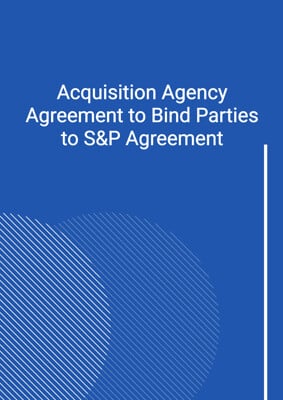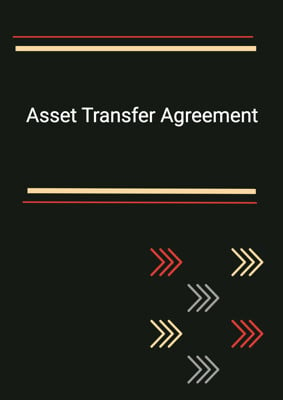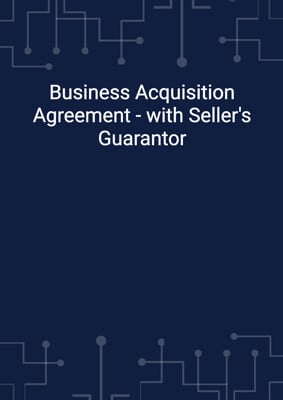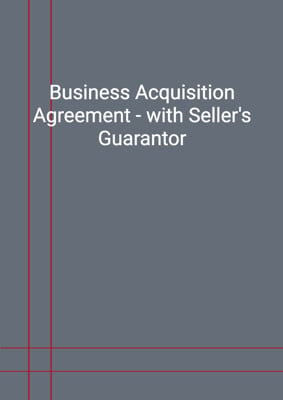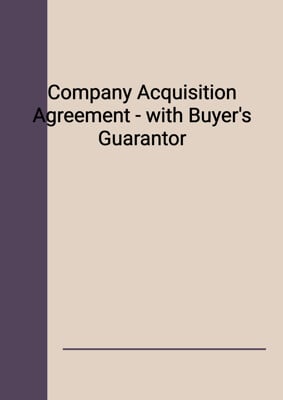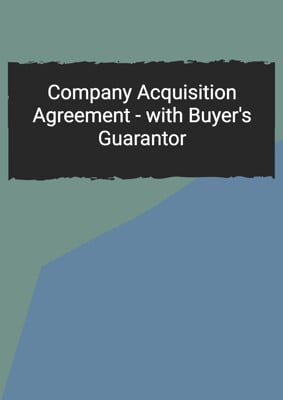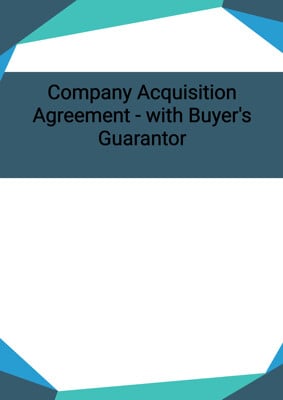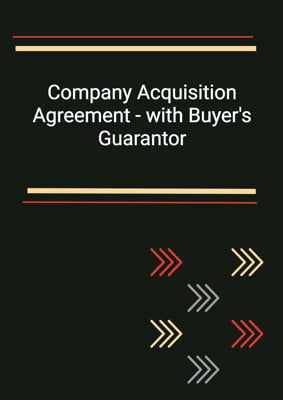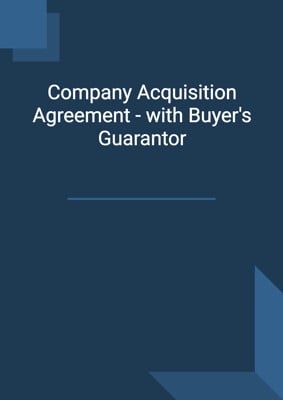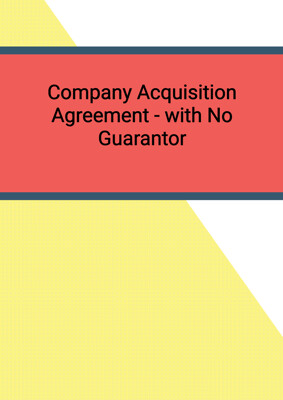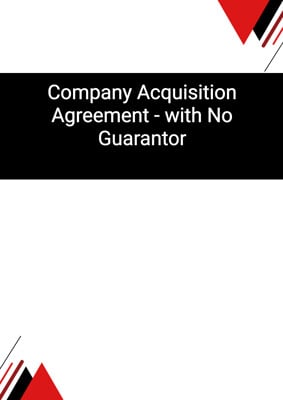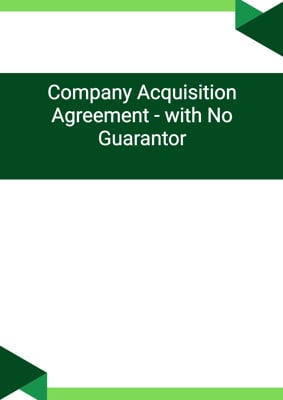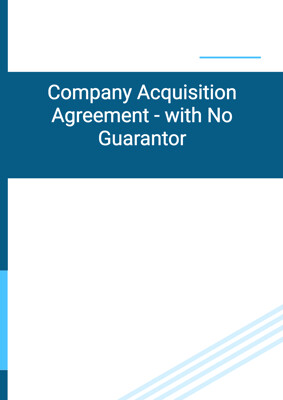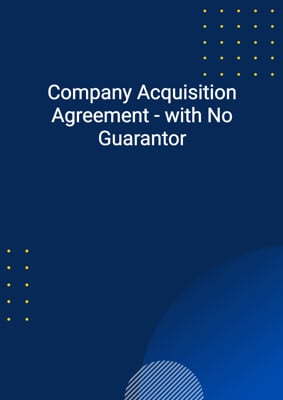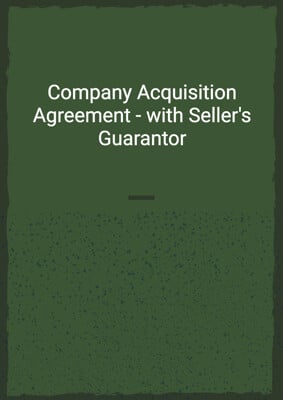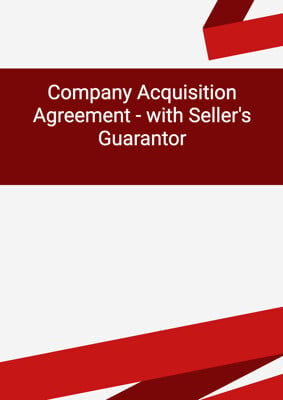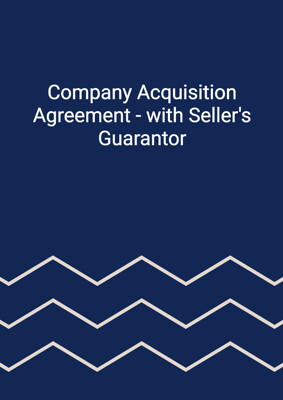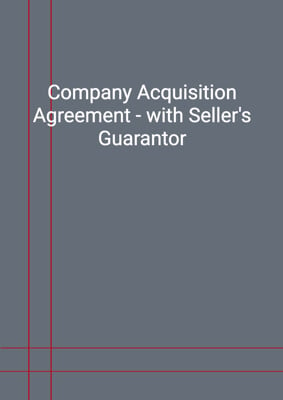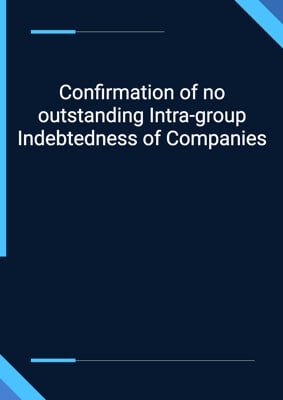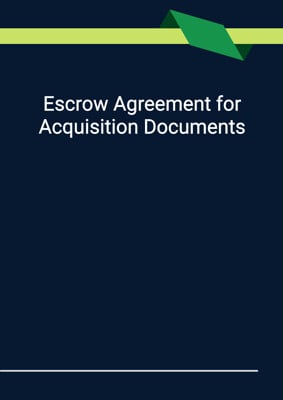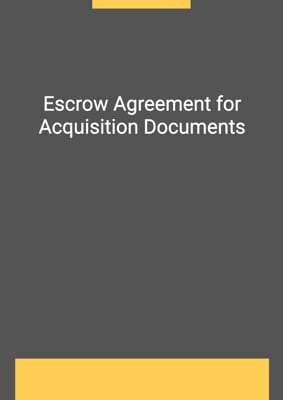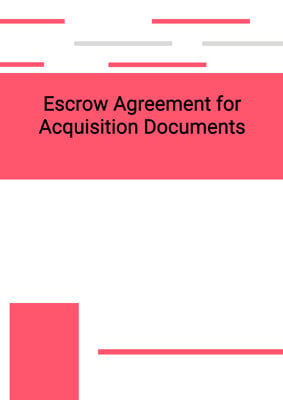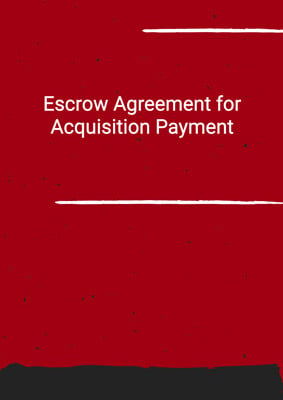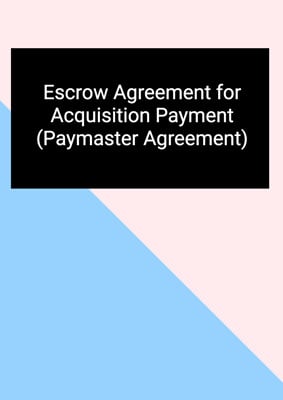
Company Acquisition Agreement - with Seller's Guarantor
Buyer Form - 1 Seller
A company acquisition agreement between a Buyer and a Seller with the Seller's parent guaranteeing the obligations. The Seller's warranties are included in another template. This agreement is drafted in favour of the Buyer.
How to Tailor the Document for Your Need?
01
Create Document
Fill in the details of the parties. You can click the "Fill with Member’s Information" button to complete it with information saved to your account.
02
Fill Information
Please fill in any additional information by following the step-by-step guide on the left hand side of the preview document and click the "Next" button.
03
Get Document
When you are done, click the "Get Document" button and you can download the document in Word or PDF format.
04
Review Document
Please get all parties to review the document carefully and make any final modifications to ensure that the details are correct before signing the document.
Document Preview
Document Description
The Company Acquisition Agreement - with Seller's Guarantor is a legal document that outlines the terms and conditions of the acquisition of a company. The agreement is entered into by three parties: the seller, the guarantor, and the buyer. The seller is the sole legal and beneficial owner of the share capital of the company, and they agree to sell all of the issued share capital to the buyer. In consideration of the buyer entering into this agreement, the guarantor has agreed to guarantee the performance by the seller of its obligations under this agreement.
The agreement is divided into several sections, each addressing different aspects of the acquisition. The interpretation section defines the terms used in the agreement. The sale of the shares and the price section specifies the terms of the sale, including the number of shares, the price, and the payment method. The conditions to completion section outlines the conditions that need to be fulfilled before the sale can be completed.
The agreement also includes sections on pre-completion undertakings, completion, completion accounts (if applicable), post-completion undertakings, restrictions on the seller, warranties, limitations on claims, buyer's rights to terminate, withholding tax and grossing up, entire agreement, variation, assignment, announcements, costs, severability, governing law and jurisdiction, notices and service.
The agreement also includes schedules that provide additional information, such as details of the company and its subsidiaries, the pension scheme, completion accounts (if applicable), the warranties, and the articles of association (if applicable).
The importance of this document lies in its ability to protect the interests of all parties involved in the acquisition. It ensures that the terms of the sale are clearly defined and that both the buyer and the seller are aware of their rights and obligations. The agreement also provides a framework for resolving any disputes that may arise during or after the acquisition process.
How to use this document?
1. Review the agreement: Familiarize yourself with the terms and conditions of the Company Acquisition Agreement - with Seller's Guarantor. Pay close attention to the sections on sale of shares, conditions to completion, pre-completion undertakings, completion, completion accounts (if applicable), post-completion undertakings, restrictions on the seller, warranties, limitations on claims, buyer's rights to terminate, withholding tax and grossing up, entire agreement, variation, assignment, announcements, costs, severability, governing law and jurisdiction, notices and service.
2. Seek legal advice: If you are unfamiliar with the legal aspects of company acquisitions, it is recommended to seek legal advice. A lawyer specializing in corporate law can provide guidance and ensure that your interests are protected.
3. Understand the obligations: Make sure you understand your obligations under the agreement. This includes fulfilling any pre-completion undertakings, providing necessary information for completion accounts (if applicable), and complying with post-completion undertakings.
4. Comply with conditions to completion: Ensure that all conditions to completion are fulfilled before proceeding with the sale. This may include obtaining shareholder approval, obtaining necessary consents, and repaying any outstanding intra-group indebtedness.
5. Keep records: Maintain accurate records of all transactions and communications related to the acquisition. This will help in case of any disputes or claims that may arise in the future.
6. Comply with tax obligations: Ensure that all tax obligations, including withholding tax and grossing up, are properly addressed and paid.
7. Communicate with all parties involved: Maintain open and clear communication with the seller, guarantor, and any other relevant parties throughout the acquisition process. This will help in resolving any issues or concerns that may arise.
8. Monitor compliance: Regularly review and monitor compliance with the terms of the agreement. This includes ensuring that all warranties and post-completion undertakings are being fulfilled.
9. Seek professional advice: If you encounter any difficulties or uncertainties during the acquisition process, do not hesitate to seek professional advice. A lawyer or other relevant professionals can provide guidance and assistance in resolving any issues.
10. Keep the agreement confidential: Ensure that the terms of the agreement remain confidential and are not disclosed to any unauthorized parties. This will help protect the interests of all parties involved in the acquisition.
Not the right document?
Don’t worry, we have thousands of documents for you to choose from:

